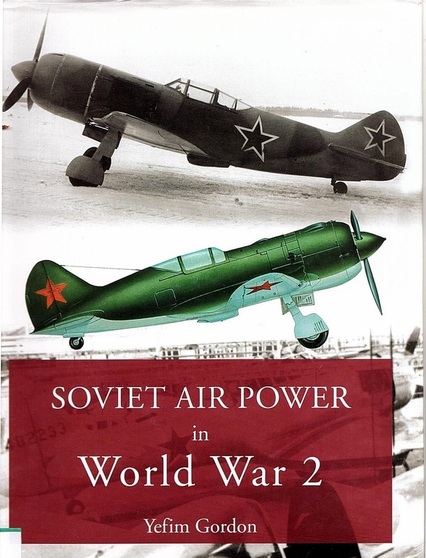
The extensive technical information is given in tabular form in four big tables. There are also tables showing production by marks and version by manufacturer; orders and deliveries of Valentines and derivatives, by contractor and vehicle number and Supplies of Valentines and deliveries to the USSR, by period and type.
Newsome notes that the sometimes repeated claim that the driver in Archer had to leave his seat during firing in order to keep his head is false. According to him, the recoil of the 17 -pdr gun was arrested at 14.5 inches by a hydraulic buffer and two steel springs. That shouldn’t be a problem with an AFV of 16.76 metric tons but one must keep in his mind that the cartridge case of 17 -pdr was about 23 inches long and the length of a complete 17-pdr APCBC round (the longest and the most important ammunition for the 17-pdr gun) was appr. 34 inches long. But of course there was enough room, even though without much space to spare, between the recoil guard and driver’s head to allow him to stay on his seat. Probably not a most comfortable place to be when the very powerful gun was fired.
There are plenty of b/w photographs, the only colour photo is the cover one. What I miss are a photograph of an Mk III/V from above that would show the roof arrangement of the three men turret and a photograph showing how cramped the turret was. Almost all photographs are interesting even if some are rather small. I am not a fan of Osprey’s “action” colour illustration plates, there are two in this book, one of the probably most famous Valentine action, the 23rd Armoured Brigade attack Ruweisat Ridge, Egypt, on 22 July 1942 and the other of the only British tank action in the Far East in 1943, that of the 146th RAC attack at Donbaik in Burma. IMHO both are nice but I would have substituted the first one (IMHO the jungle plate is more beautiful) for a 5-view drawing of one of the main production Valentine marks. To be honest I must admit that I would prefer a 5-view drawing of Archer because I’m fan of that small but deadly oddity and because I already have 5-view drawings of several Valentine marks.
There is also the normal colour cut-a-way view, the object of it being a Valentine IV and six colour profiles of Valentines (Mks I, III, two of VI, IX and XI) plus one of Bishop and one of Archer, some with smaller colour drawing(s) showing the front or the front and rear of the vehicle, the latter cases are Valentine VI at the Canadian Armour School at Borden Camp, Canada, in 1942 and the Archer ʽL1’ of 102nd Anti-Tank Regiment Royal Artillery, 15th (Scottish) Division, in Germany, February 1945.
I have two complains besides the lack of a 5-view drawing and the couple photographs mentioned above. Contrary to what Newsome writes according to Zaloga and Grandsen, Valentine was the most popular British tank in Soviet service, preferred to the Matilda because of its better mobility. I have also read the same from some older sources. Also the http://tankarchives.blogspot.fi/2013/10/lend-lease-shopping-trip.html indicates that. And the Red Army clearly used its Valentines also in main offensive operations at least up to the late summer of 1944. See e.g. http://tankarchives.blogspot.fi/2016/06/world-of-tanks-history-section-taming.html for an example of use in late January 1944. 18th Tank Corps was also part of the 5th Guards Tank Army, one of the spearheads of the Red Army so definitely not a second-rate unit. I doubt that not even the 6th Guards Cavalry Grodno Division, which operated NNW Berlin during the last days of April 1945, can be called a second-rate unit. Its tank regiment had eleven combat-ready Valentines at that time, making 39% of the regiment’s combat ready AFVs, see http://tankarchives.blogspot.fi/2015/02/valentines-for-victory.html.
Secondly according to the Red Army’s Valentine VII Manual, clearly a translated copy of the British one with Russian text and captions, the fifth gear was in the left bottom corner of the gate not in top left corner as Newsome writes. I don’t know which is right. Also there is one difference in given armour thicknesses between the manual and the book, namely the thickness of louvres and covers on the hull roof. In this case I think the manual has the correct information.
All in all an exceptionally good little book and warmly recommended.
Sources:
Red Army’s Valentine VII Manual
Dyer, D.P., Infantry Tank Mark III ‘Valentine’ – (Part 2) Bellona Military Vehicles Prints 38 (Hemel Hempstead:
Model & Allied Publications 1974).
Fletcher, David, The Great Tank Scandal - British Armour in the Second World War Part 1 (London: HMSO,
1993).
---- , The Universal Tank - British Armour in the Second World War Part 2 (London: HMSO, 1993).
Zaloga Steve J. and Grandsen, James, Soviet Tanks and Combat Vehicles of World War Two (London: Arms
and Armour Press, 1984).
http://www.wwiiequipment.com/index.php?option=com_content&view=article&id=65:valentine-infantry-tank&catid=38:infantry-tanks&Itemid=56
http://tankarchives.blogspot.fi/2016/06/world-of-tanks-history-section-taming.html
http://tankarchives.blogspot.fi/2013/09/lend-lease-impressions-valentine.html
http://tankarchives.blogspot.fi/2015/02/valentine-mkix-trials.html
http://tankarchives.blogspot.fi/2015/02/valentines-for-victory.html
http://tankarchives.blogspot.fi/2013/10/lend-lease-shopping-trip.html









 RSS Feed
RSS Feed
